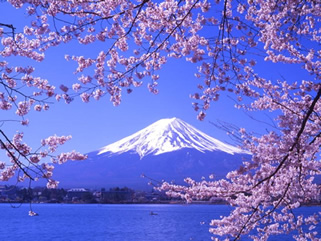初心
I (Joseph) am in Tokyo at the moment, (so is Barack Obama, but there is no connection in our travel schedules). He is trying to stabilise the region, I am training an NLP course. I love to visit Japan and right now, the thirteen and a quarter million people who live in Tokyo are enjoying the spring sunshine, although the fabled cherry blossom has faded. It blooms in early spring. I was sorry to miss it, I arrived about a week too late. Tokyo it is a vibrant, exciting city, full of light, sound and busy people. It is also a very green city, full of plants and trees and parks, almost as green as London. It is pleasant to wander around the parks, eat the food, and particularly to go to the technology shops, where you can buy just about anything you could ever imagine in the realm of technology, and many other things you never thought existed.
I am here training NLP and talking about map and territory, language and thought and the idea of being curious instead of thinking you know the answer. This last is a NLP frame, and it also very much a coaching frame. A coach needs to be curious about their client and not assume they know the client’s world. The moment they think they know, they have lost the connection with the client and are unlikely to help them. Every client is different, and a coach needs to approach them without assumptions. A coach needs beginner’s mind – another Japanese concept. As a Zen master Shunryu Suzuki, said: ‘In the beginner’s mind there are many possibilities, in the expert’s mind there are few.’ He said it about Zen practice but it applies to coaching too. In Japanese beginner’s mind is written:
初心
Translated literally this means ‘to start the mind, (or heart)’ Beginner’s mind is a skill. It comes with the realisation you can never really know the client, so it makes you humble, the client is the expert in their world. As you gain in skill, beginner’s mind is harder to achieve, and the better you get, the more important it is and the more difficult it becomes to keep. Every client is different, and we have to give up our assumptions about our client to be able to see, so we can help them. We do not know what is best for them. When we approach the client with beginner’s mind, we will not ask leading or loaded questions, but give the client space to reveal their thoughts.
Loaded and leading questions are risky in coaching, and sometimes coaches ask them without realising. Some years ago I was supervising a coach where their client was describing how he wanted to be more assertive, but thought that if he did, he would lose friends. We could call this a limiting belief – simply stated – being more assertive equals losing friends. Of course, this depends completely on what the client means by ‘assertive’ and how they plan to be assertive. ‘Assertiveness’ to the client clearly had a particular meaning. However the coach assumed they knew what the client meant by ‘assertive’, and also accepted the client’s assumption that being assertive would lose them friends. They asked, ‘So what can you do to stop losing friends when you are assertive?’
This question did not go anywhere useful. It confirmed the client’s limiting belief that being assertive would lose them friends. The clients shoulders slumped, and I intervened to question the coach’s question and put the session back on track.
When we make assumptions and have expectations, it is very easy to judge people as wrong when they do not meet them. This is particularly so when you are in a different culture. Culture is a set of expectations that the people take for granted, so coming from another culture, you are bound to have your expectations challenged. Then it is all too easy to jump to a judgement that the way they do things is wrong or bad. It is just different, and that is great, life would be very boring if people were all the same. I was walking home today and there was an official notice painted on the pavement: ‘Smoking in the street is prohibited’. I have never seen this anywhere else. Different. (But welcome).
There is a picture of mount Fuji at the top of this newsletter, it is the iconic image for Japan, a sacred mountain, and it is very beautiful, one of the most symmetrical volcanoes in the world. I also learned it is the highest single mountain in the world at just over three thousand seven hundred metres. before you think, ‘Wait, isn’t that Mount Everest?’ Other mountains (such as Mount Everest), may be higher, but they are part of a mountain range, they are not solitary mountains like Mount Fuji. Mount Everest is deep in the Himalayas. I wanted to go and visit Mount Fuji, but it is too far from Tokyo and I did not have time in my schedule. So I did the next best thing and went to a museum in the centre of Tokyo which had a exhibition of paintings of mount Fuji and also an exhibition of paintings of cherry blossom. The map may not the territory, but it’s better than no territory.
This post is also available in: InglésPortugués, Brasil


